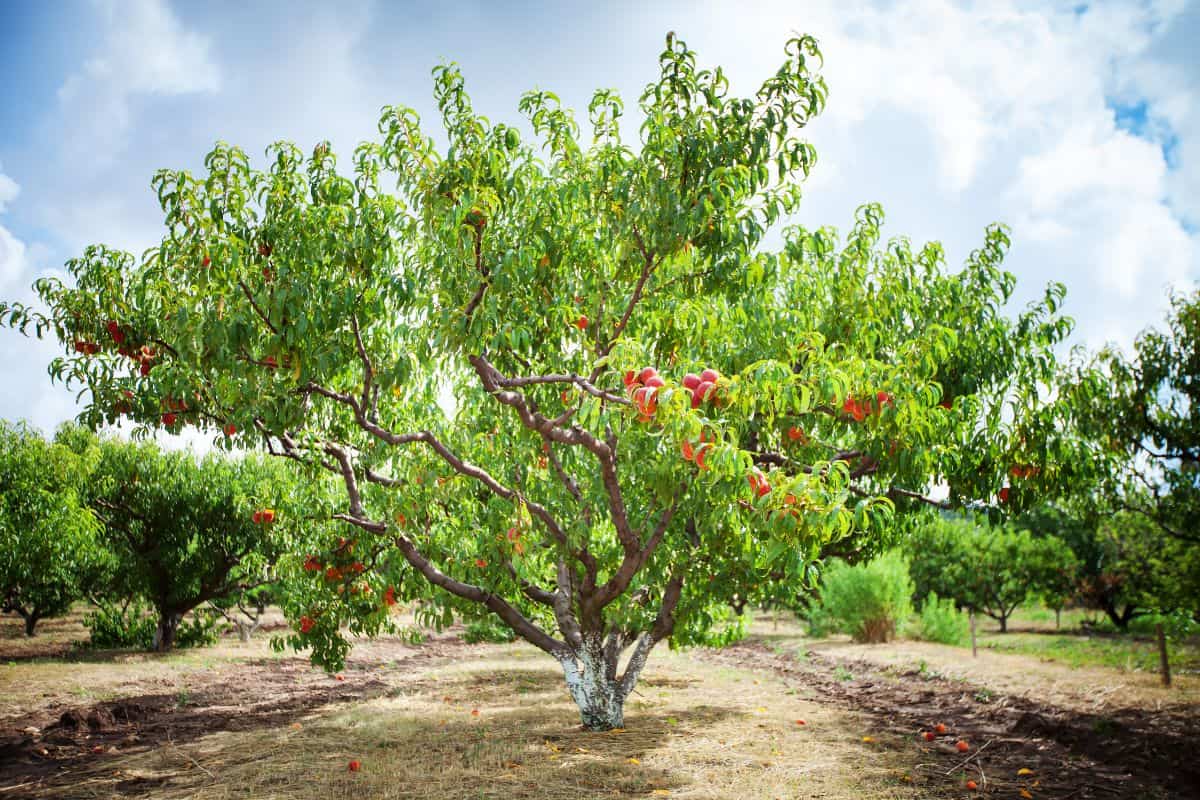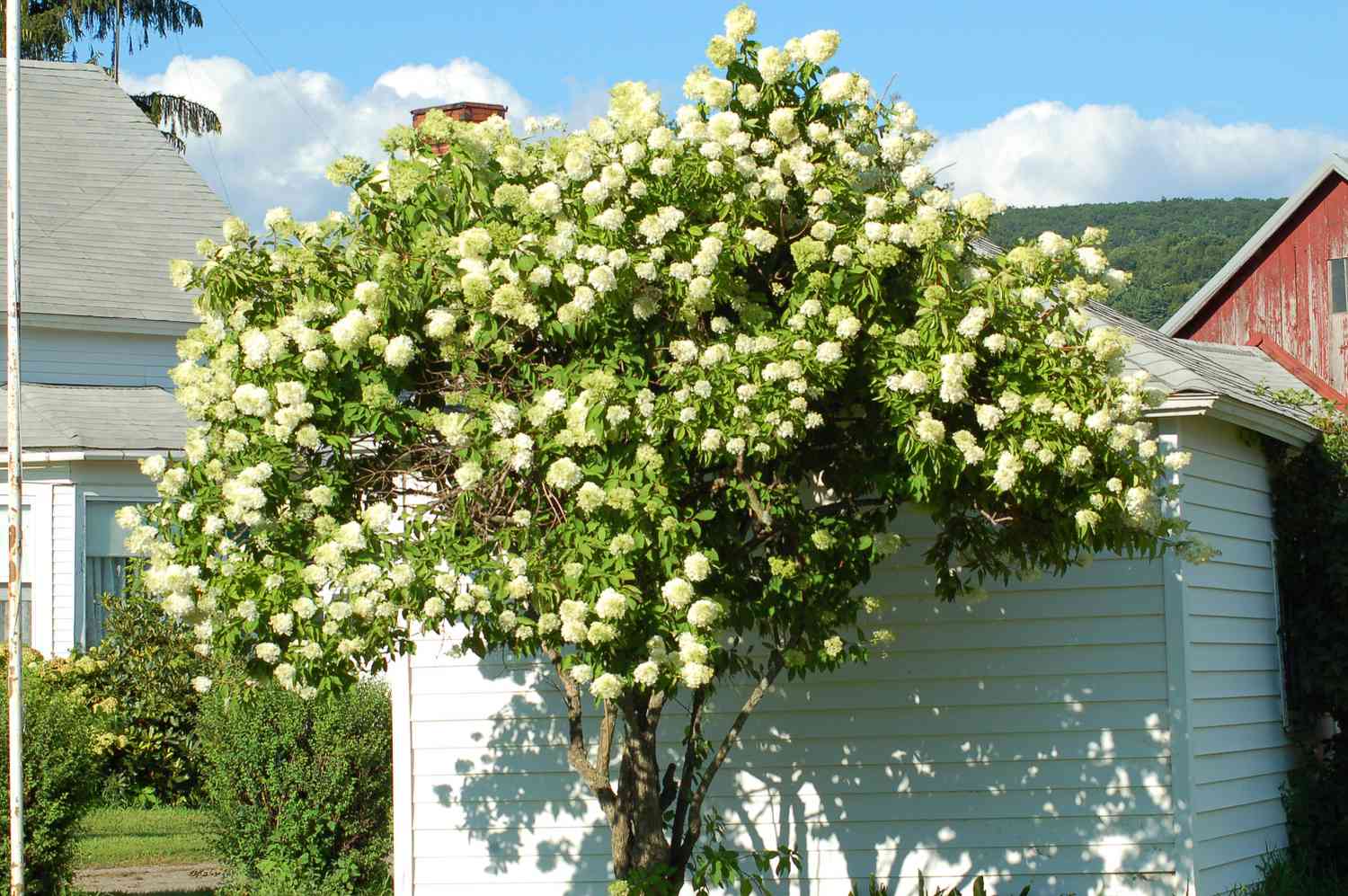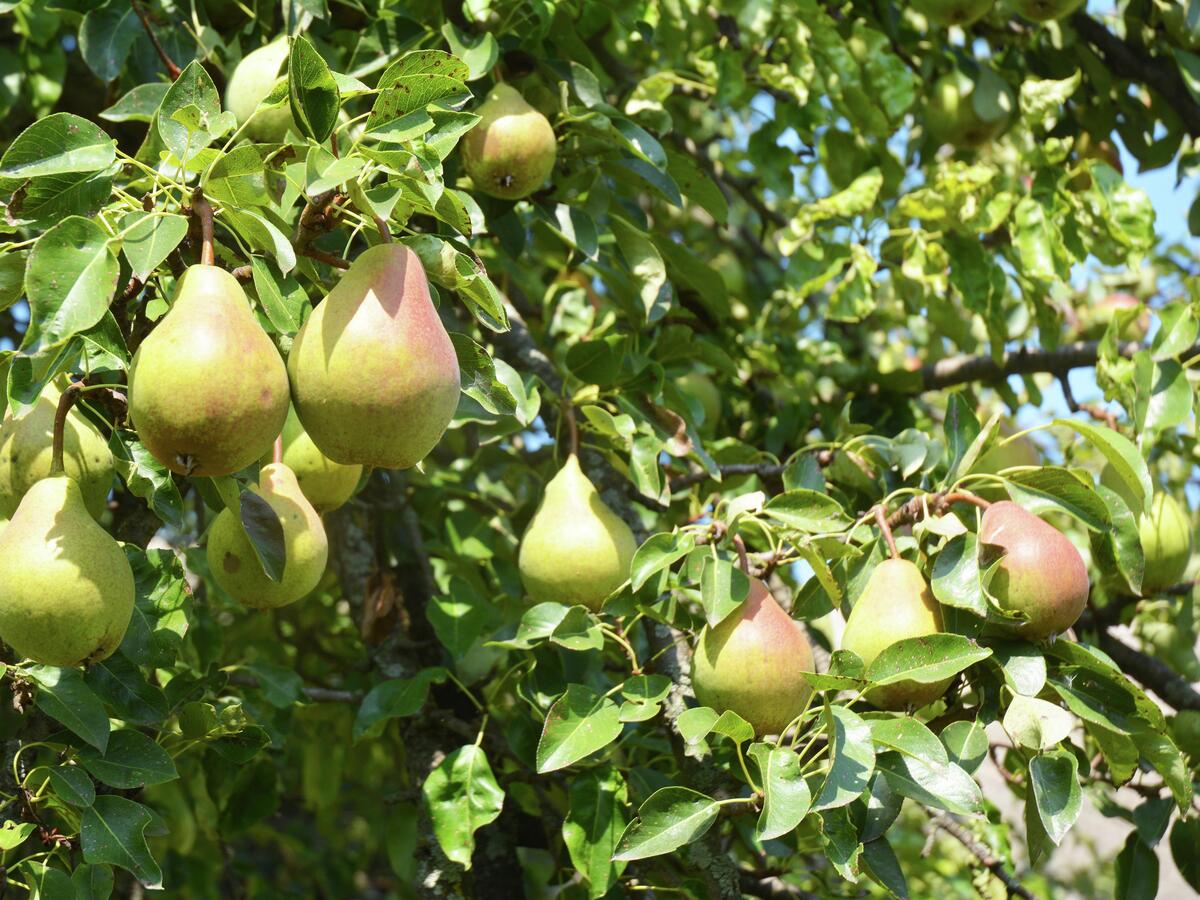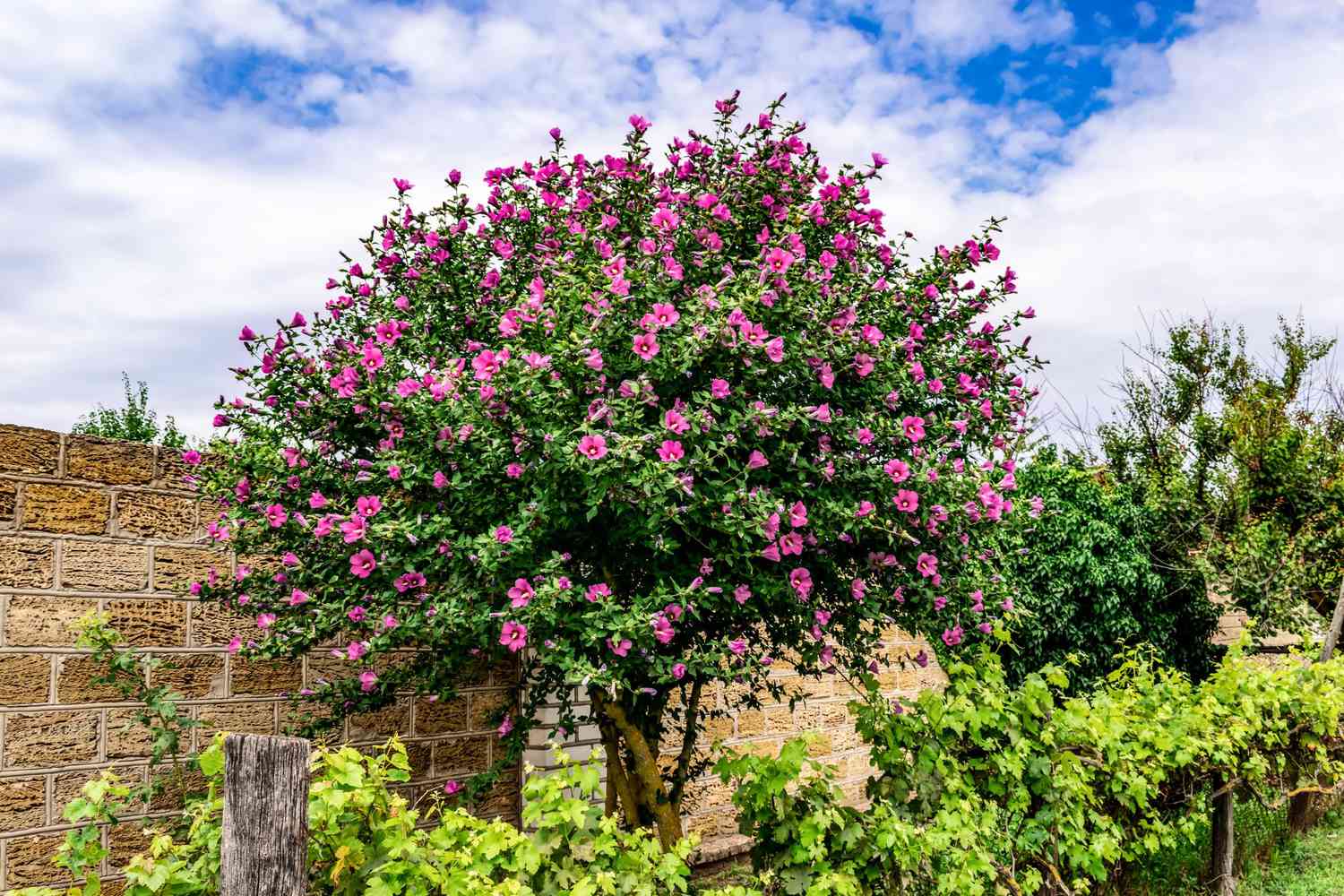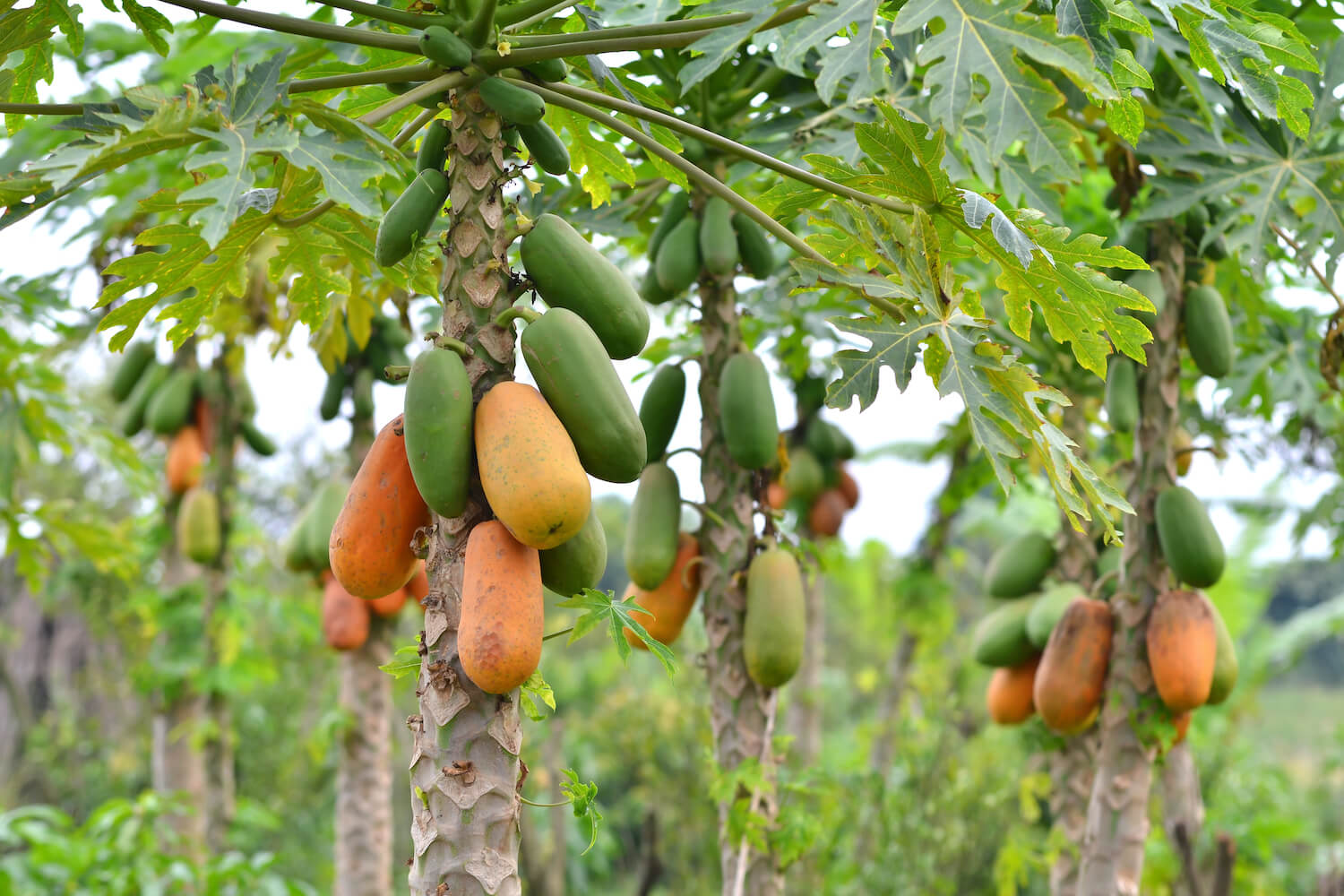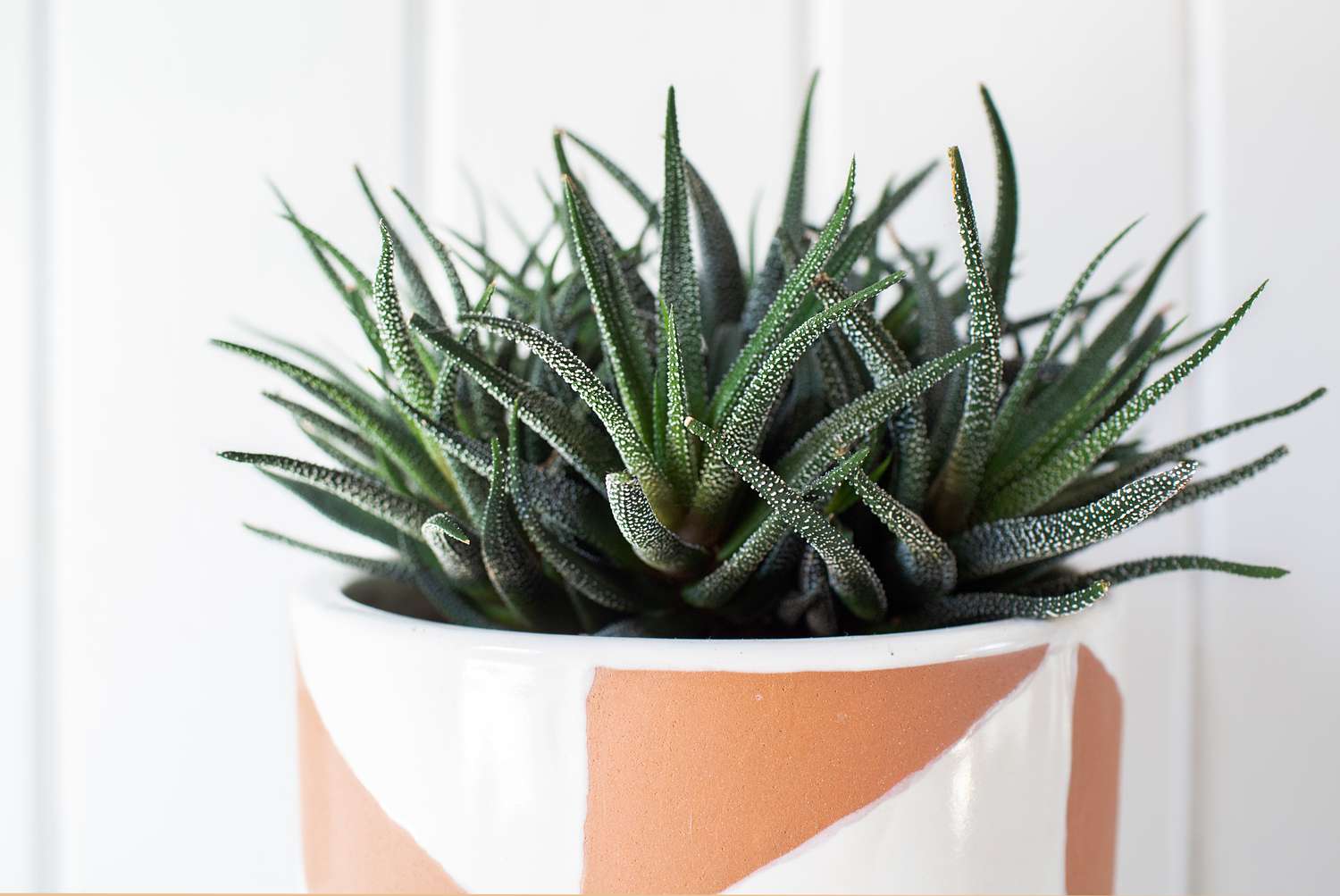Home>Gardening Techniques>Plant Care>How Big Do Orange Trees Get


Plant Care
How Big Do Orange Trees Get
Modified: January 22, 2024
Learn about orange tree plant care and discover how big orange trees can get. Find out the essential tips and guidelines for nurturing healthy orange trees.
(Many of the links in this article redirect to a specific reviewed product. Your purchase of these products through affiliate links helps to generate commission for Chicagolandgardening.com, at no extra cost. Learn more)
Table of Contents
Introduction
Welcome to the wonderful world of orange trees! Whether you are a passionate gardener or a novice with a green thumb, learning about the care and maintenance of these citrus trees is an essential part of cultivating a thriving garden. Orange trees not only provide beauty with their lush foliage and vibrant fruit, but they also offer the delightful reward of delicious, juicy oranges.
But how big do orange trees really get? Well, the size of an orange tree can vary depending on several factors, including the variety, growing conditions, and maintenance practices. In this article, we will explore these factors and provide you with valuable insights on the optimal care and maintenance to ensure your orange tree reaches its full potential.
Before we dive into the details, it is important to note that orange trees are perennial evergreen trees belonging to the Rutaceae family. They are native to subtropical and tropical regions, and their origins can be traced back to Southeast Asia. These trees are not only admired for their juicy fruits, but they also add aesthetic value to any garden or landscape with their glossy green leaves and fragrant blossoms.
As you embark on your journey to grow an orange tree, keep in mind that patience is key. These trees take time to grow and bear fruit, but with the right care and attention, you can witness the beauty and taste the sweetness of your own homegrown oranges.
So, let’s delve into the different factors that affect the size of orange trees, explore the various varieties available, discuss the optimal growing conditions, and provide guidance on pruning and maintenance to ensure the health and vitality of your orange tree.
Factors Affecting Orange Tree Size
The size of an orange tree is influenced by several factors that contribute to its growth and development. Understanding these factors will help you make informed decisions about how to care for your orange tree and promote its optimal size.
1. Variety: Different orange tree varieties have varying growth habits and sizes. Some varieties, like the Navel orange, are known for their large size and can reach heights of up to 30 feet (9 meters) or more. On the other hand, dwarf orange tree varieties, such as the Calamondin or the Washington Navel, are smaller in size and typically reach heights of around 6 to 10 feet (1.8 to 3 meters). When selecting an orange tree, consider the size of your garden or space to ensure the variety you choose is suitable.
2. Rootstock: Orange trees are often grafted onto rootstocks that affect their overall size and vigor. Rootstocks are selected based on their specific characteristics and compatibility with the desired variety. Some rootstocks, like the Flying Dragon or the Trifoliate Orange, create smaller, more compact trees. Others, such as the Cleopatra or the Sour Orange, result in larger, more vigorous trees. Understanding the rootstock used for your orange tree can provide insights into its expected size and growth habit.
3. Age: Just like any living organism, orange trees grow and develop over time. Younger trees tend to be smaller in size, while older, more established trees have had more time to grow and reach their full potential. As your orange tree ages, it will continue to increase in size, both in height and spread. It’s important to be patient and allow your tree the time it needs to mature and reach its maximum size.
4. Growing Conditions: The environment in which an orange tree is planted plays a significant role in its growth and size. Factors such as sunlight, temperature, soil quality, and water availability can directly impact the tree’s overall health and development. Orange trees thrive in full sun, ideally receiving at least 6 to 8 hours of direct sunlight each day. They prefer well-drained soil that is rich in organic matter. Adequate water is essential for a healthy orange tree, but it’s important to avoid over-watering, as this can lead to root rot and stunted growth.
5. Pruning and Training: Proper pruning and training techniques can help control the size and shape of an orange tree. Regular pruning is essential to remove dead or diseased branches and maintain a balanced canopy. Pruning also promotes air circulation and allows sunlight to penetrate the lower branches, ensuring even growth throughout the tree. Training young orange trees by selectively pruning branches can help shape the tree and prevent it from becoming too large or unruly.
By considering these factors, you can take proactive measures to control and manage the size of your orange tree, ensuring it fits harmoniously in your garden or landscape.
Varieties of Orange Trees
Orange trees come in a wide range of varieties, each with its own unique characteristics, flavors, and growth habits. From popular commercial varieties to rare heirloom types, there is a variety of orange tree to suit every taste and preference. Let’s explore some of the most commonly grown orange tree varieties:
1. Navel Orange (Citrus sinensis): The Navel orange is one of the most popular and widely cultivated orange varieties. It is characterized by its large size, sweet flavor, and seedless nature. The fruit has a distinctive “navel” or indentation at the blossom end, which gives it its name. Navel oranges are known for their juicy, easy-to-peel flesh, making them a favorite for eating fresh and juicing.
2. Valencia Orange (Citrus sinensis): Valencia oranges are prized for their excellent juice content and sweet flavor. These oranges are known as “late-season” oranges, as they ripen in the summer or early fall. They have a thin skin and a vibrant orange color. Valencia oranges are not only delicious but also highly versatile, commonly used for juicing, cooking, and baking.
3. Clementine (Citrus reticulata): Clementines are a smaller variety of orange, known for their easy-to-peel skin and sweet, juicy segments. They are seedless and have a vibrant, deep orange color. Clementines are typically sweeter and have a slightly different flavor profile compared to traditional oranges. They are often enjoyed as a snack, added to salads, or used in desserts.
4. Blood Orange (Citrus sinensis): Blood oranges are unique orange varieties with a deep reddish-purple flesh. The anthocyanins present in the pigments give the fruit its distinct coloration. Blood oranges have a sweet and slightly tangy flavor, with hints of raspberry or strawberry. They are often used in salads, marmalades, and desserts to add a dramatic visual and flavor contrast.
5. Satsuma Mandarin (Citrus unshiu): Satsuma mandarins are a type of seedless mandarin orange that is highly prized for its easy-peeling skin and exceptionally sweet and juicy flesh. They are smaller in size compared to traditional oranges and have a vibrant orange color. Satsumas are an excellent choice for snacking and are often enjoyed around the holiday season.
These are just a few examples of the many orange tree varieties available. When selecting a variety for your garden or landscape, consider factors like flavor preference, fruit size, and tree growth habit. By choosing the right variety, you can enjoy the beauty and abundance of homegrown oranges that suit your taste and meet your specific needs.
Optimal Growing Conditions for Orange Trees
Providing the optimal growing conditions for your orange trees is essential for their overall health, growth, and fruit production. By creating a favorable environment, you can ensure that your orange trees thrive and produce an abundant harvest. Here are some key factors to consider when it comes to the growing conditions of orange trees:
1. Sunlight: Orange trees require full sun exposure to flourish. They need a minimum of 6 to 8 hours of direct sunlight per day. Planting your orange trees in a location that receives ample sunshine will promote vigorous growth, enhance fruit development, and increase the sweetness of the oranges.
2. Soil: Well-draining soil is crucial for orange tree cultivation. The soil should have good water infiltration and drainage capabilities, as excessive moisture can lead to root rot and other diseases. Ideally, the pH level of the soil should be between 6 and 7, slightly acidic to neutral. Amending the soil with organic matter, such as compost or well-rotted manure, can improve its structure and fertility.
3. Watering: Orange trees require regular and consistent watering, especially during periods of active growth and fruit development. While they need adequate moisture, over-watering should be avoided as it can lead to root damage and fungal diseases. It’s important to strike a balance and ensure the soil is evenly moist but not waterlogged. Deep watering is recommended, allowing the water to penetrate the root zone.
4. Temperature: Orange trees thrive in subtropical to tropical climates. They prefer mild winters with temperatures not dropping below 28°F (-2°C) for prolonged periods. Temperatures above 95°F (35°C) during the growing season can stress the trees, affecting fruit set and quality. If you live in a region with colder winters, consider planting cold-hardy orange tree varieties or providing additional protection during cold spells.
5. Fertilization: Orange trees benefit from regular fertilization to ensure they receive essential nutrients for healthy growth and fruit production. Use a balanced citrus fertilizer that contains nitrogen, phosphorus, and potassium, as well as micronutrients like iron and zinc. Apply the fertilizer according to the manufacturer’s instructions, usually in early spring and late summer, to provide a steady supply of nutrients throughout the year.
6. Mulching: Applying a layer of organic mulch around the base of your orange trees helps conserve soil moisture, suppress weed growth, and regulate soil temperature. Use materials like straw, wood chips, or compost and spread the mulch in a 2 to 3-inch layer, making sure to keep it away from direct contact with the trunk.
By ensuring your orange trees receive the optimal growing conditions of sunlight, well-draining soil, appropriate watering, suitable temperature, and regular fertilization, you are setting them up for success. With proper care and attention, your orange trees will reward you with bountiful harvests of delicious, juicy oranges.
Pruning and Maintenance of Orange Trees
Pruning and maintenance play a crucial role in the health, shape, and productivity of your orange trees. By implementing proper pruning techniques and regular maintenance practices, you can ensure that your trees remain vigorous, well-balanced, and free from pests and diseases. Here are some key guidelines for pruning and maintaining orange trees:
1. Pruning Timing: The best time to prune orange trees is in late winter or early spring before new growth begins. Pruning during this dormant period helps stimulate new growth and allows the tree to recover before the active growing season. Avoid pruning in late summer or fall as it may interfere with fruit development and leave the tree vulnerable to cold weather.
2. Removing Dead and Diseased Wood: Start by inspecting your orange tree for any dead, diseased, or damaged branches. Use clean, sharp pruning shears to make clean cuts just outside the branch collar. Removing deadwood not only improves the overall appearance of the tree but also prevents the spread of diseases and pests.
3. Thinning the Canopy: Over time, orange trees can develop dense canopies, which may inhibit sunlight penetration and air circulation. To improve light and airflow, selectively remove some of the inner or crossing branches. Aim for an open, well-spaced canopy that allows sunlight to reach all parts of the tree, promoting even fruit ripening and reducing the risk of fungal diseases.
4. Controlling Tree Size: If your orange tree is becoming too large for your space, you can manage its size through strategic pruning. By selectively removing long or upward-growing branches, you can control the height and width of the tree. Alternatively, consider planting dwarf or semi-dwarf orange tree varieties that naturally stay smaller and are more suitable for smaller gardens or containers.
5. Shaping and Training: Pruning can also be used to shape and train young orange trees into a desired form. Begin by selecting a central leader branch and removing any competing leaders. Prune side branches to create a well-balanced framework and maintain an open center. As the tree grows, continue to guide its shape by selectively pruning and maintaining a strong, well-spaced branch structure.
6. Regular Maintenance: In addition to pruning, regular maintenance practices are essential for the well-being of your orange trees. Monitor for pests and diseases, such as aphids, scales, or citrus greening, and take appropriate measures to address them promptly. Keep the area around the tree clean and free from debris, which can harbor pests and diseases. Adequate watering and fertilization, as discussed in the previous section, are crucial for the tree’s overall health.
By following these pruning and maintenance guidelines, you can ensure that your orange trees remain healthy, productive, and visually appealing. Remember to always use clean, sharp pruning tools, make proper cuts, and consider seeking advice from local gardening resources or professionals if needed.
Potential Problems and Solutions
While orange trees are generally resilient and low-maintenance, they can still face certain problems that can hinder their growth and fruit production. Being aware of these potential issues and knowing how to address them promptly is crucial for the overall health and success of your orange trees. Here are some common problems and their solutions:
1. Pests: Orange trees can be susceptible to various pests, including aphids, scales, mites, and citrus leafminers. Regularly inspect the tree for signs of infestation, such as distorted leaves, sticky residue, or visible insects. Use natural predators or organic insecticides to control pest populations, ensuring to follow the recommended application instructions. Beneficial insects like ladybugs can help control aphids, while horticultural oils can suffocate scales and mites.
2. Diseases: Certain diseases can affect orange trees, such as citrus canker, citrus greening, and fungal infections like citrus scab. To prevent the spread of diseases, promptly remove and destroy any infected plant material. Ensure proper spacing between trees to allow for good air circulation and reduce the risk of fungal infections. Regularly monitor your orange trees for any signs of disease and consult with local gardening authorities or experts for appropriate treatments.
3. Nutrient Deficiencies: Orange trees require specific nutrients for optimal growth and fruit production. Common nutrient deficiencies include nitrogen, potassium, and iron. Symptoms may include yellowing leaves, stunted growth, or poor fruit quality. To address nutrient deficiencies, apply a balanced citrus fertilizer according to the recommended dosage. Foliar sprays containing chelated iron can help correct iron deficiencies. Conduct soil tests periodically to assess nutrient levels and adjust fertilization accordingly.
4. Over-Watering or Under-Watering: Improper watering practices can lead to various problems for orange trees. Over-watering can cause root rot, while under-watering can result in water stress and hinder fruit development. Ensure that the soil is consistently moist but not saturated. Use mulch to help retain soil moisture and avoid excessive evaporation. Consider installing a drip irrigation system to deliver water directly to the root zone, ensuring efficient water use.
5. Frost and Cold Damage: Orange trees are generally sensitive to frost and freezing temperatures. If you live in a region prone to frost or cold spells, take preventative measures to protect your orange trees. Cover the tree with frost blankets or burlap when freezing temperatures are forecasted. Use frost protection devices, such as heat lamps or cold frames, to provide additional warmth. Plant cold-hardy orange tree varieties that are better adapted to your specific climate.
By being vigilant and addressing potential problems as soon as they arise, you can maintain the health and vitality of your orange trees. Regular monitoring, proper cultural practices, and timely interventions are key to keeping your orange trees thriving and producing abundant, delicious fruits.
Conclusion
Growing and caring for orange trees is a delightful and rewarding experience. By understanding the factors that affect their size, learning about different varieties, providing optimal growing conditions, and implementing proper pruning and maintenance practices, you can ensure the health, vitality, and productivity of your orange trees.
From the moment you plant your orange trees to the day you harvest their juicy fruits, it’s important to be patient and consistent in your care. Remember that orange trees take time to grow and bear fruit, so don’t be discouraged if you don’t see immediate results. With the right amount of sunlight, well-draining soil, appropriate watering, suitable temperatures, and regular fertilization, your trees will thrive and reward you with bountiful harvests.
Pruning plays a vital role in shaping and maintaining the size of your orange trees. By removing deadwood, thinning the canopy, and training the branches, you can ensure that your trees have a strong structure, optimal sunlight penetration, and proper airflow. Regular maintenance, including pest and disease control, adequate watering, and nutrient management, is essential for the overall health and well-being of your orange trees.
As you embark on your journey of orange tree cultivation, remember to choose the right variety that suits your taste preferences and growing space. Whether it’s the large and juicy Navel orange, the sweet and versatile Valencia orange, or the unique and colorful Blood orange, there is a variety for every palate.
With proper care and attention, orange trees can provide you with not only visually stunning landscapes but also a fruitful harvest of delicious, juicy oranges. So, start nurturing these citrus gems in your garden or landscape, and enjoy the many benefits they offer – from their refreshing taste to their aesthetic beauty.
